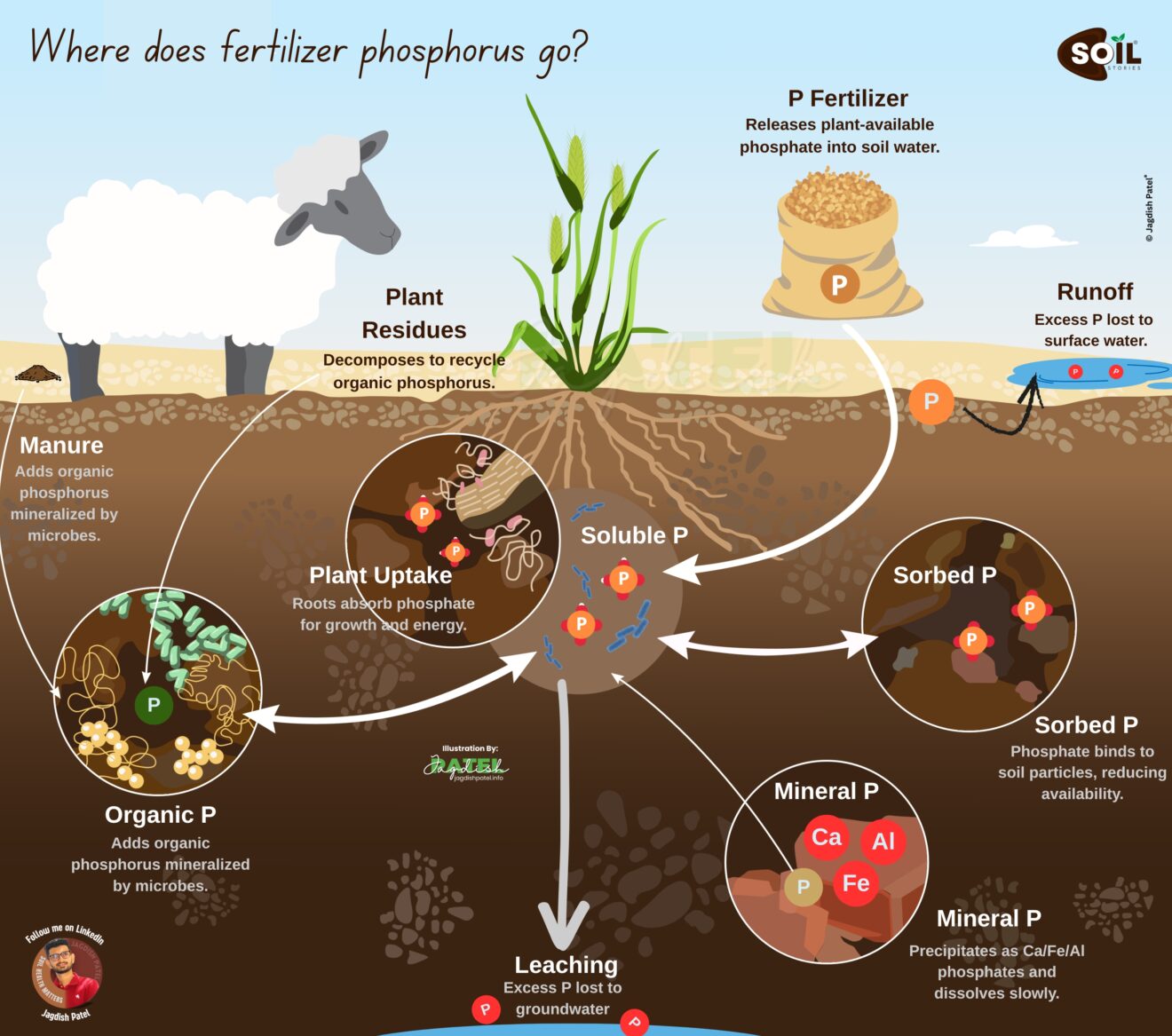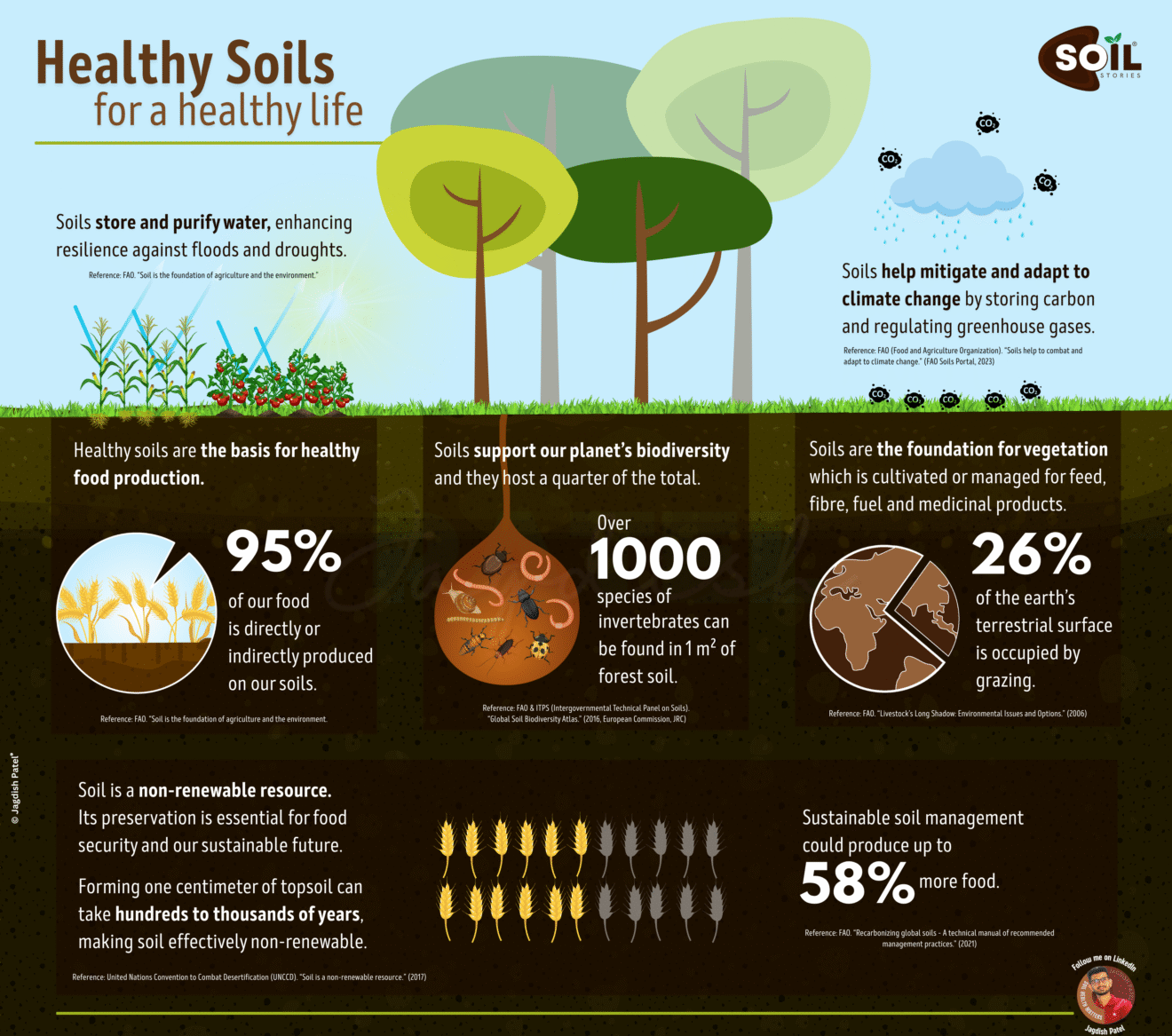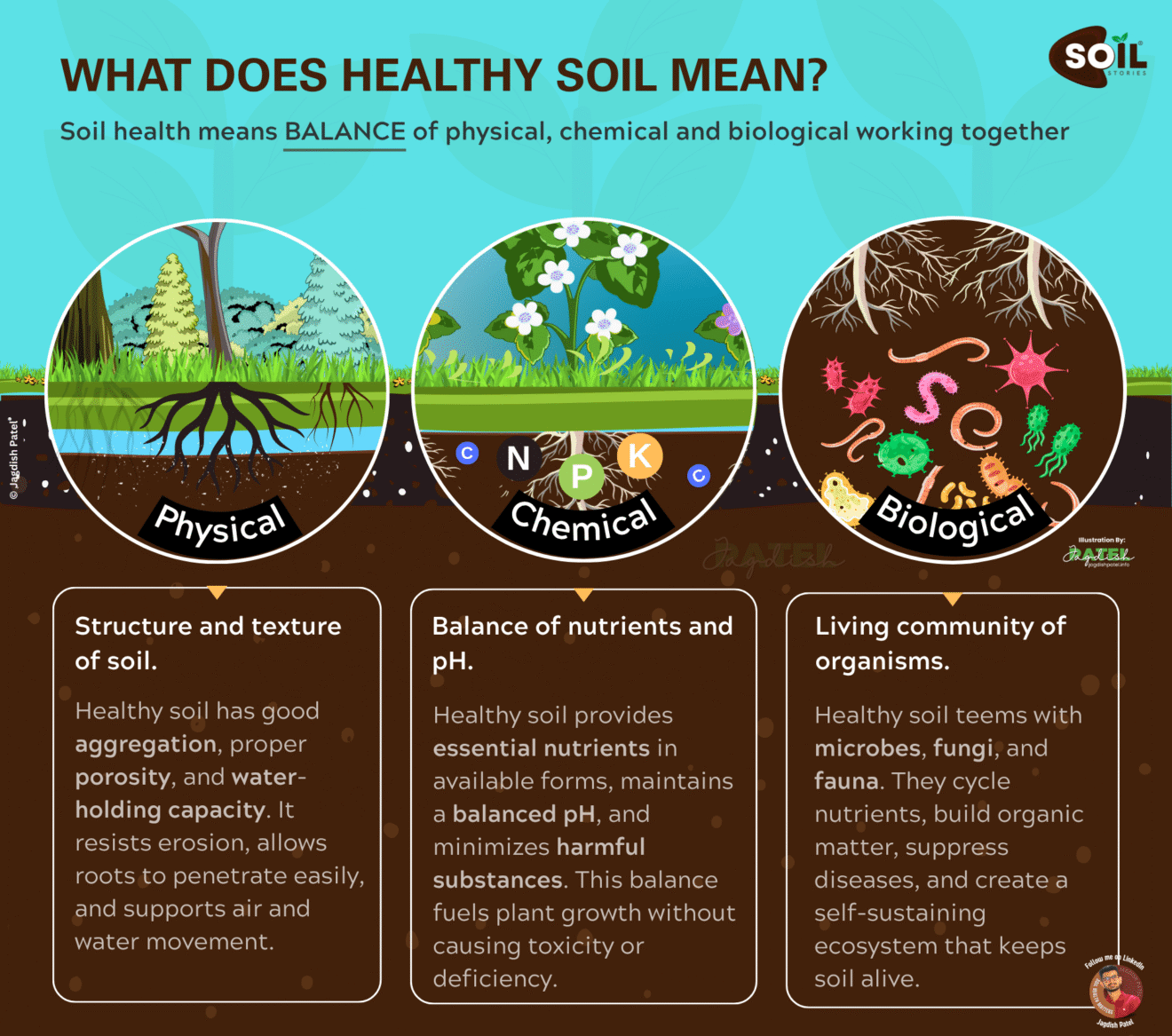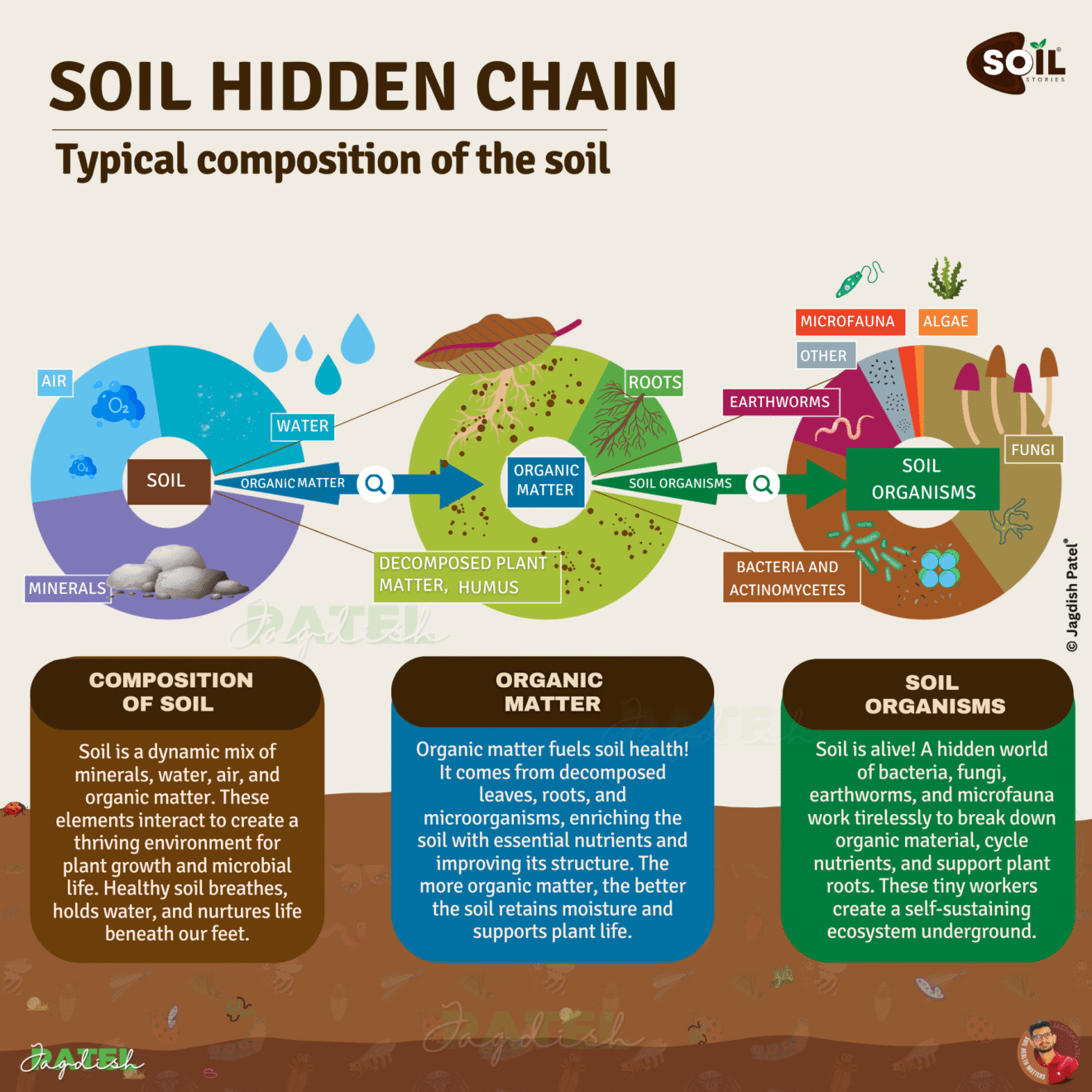Farming and climate change are closely connected, more than many realize. As global temperatures rise, farmers are facing new and unpredictable challenges. But farming practices themselves are also contributing to these changes. The Food and Agriculture Organization (FAO) reports that agrifood systems are responsible for up to 31% of all human-induced greenhouse gas emissions. Meanwhile, shifting weather patterns threaten food production worldwide. From prolonged droughts to sudden floods, the signs of a changing climate are no longer abstract, they are happening in real time. While factories and transportation are often blamed for emissions, the role of agriculture in global warming is just as significant. Understanding this connection is crucial if we hope to secure a resilient and sustainable food future.
The way we farm is shaping the climate, and the climate, in turn, is reshaping the way we must farm. But within this challenge lies a powerful opportunity. By shifting how we treat the soil, manage livestock, and apply nutrients, farming can transition from a climate contributor to a climate solution.
What Emissions Come from Farming?
Farming releases four major climate-impacting gases:
🔴 Carbon Dioxide (CO₂)
Soil tillage, fossil fuel usage, and land conversion for agriculture release carbon dioxide. When soil is plowed, it exposes organic carbon to oxygen, causing it to oxidize and escape as CO₂. Use of diesel-powered machinery and synthetic fertilizer manufacturing also contribute. Additionally, deforestation for farmland is a massive CO₂ emitter.
🟠 Nitrous Oxide (N₂O)
N₂O is roughly 270 times more potent than CO₂ over 100 years. The UNEP and FAO report that agriculture contributes more than 70% of global N₂O emissions, primarily through overuse of nitrogen fertilizers and animal manure. This gas also depletes the ozone layer.
You can explore how N₂O is released from soil in our visual story: Soils and N₂O – A Human-Made Climate Crisis
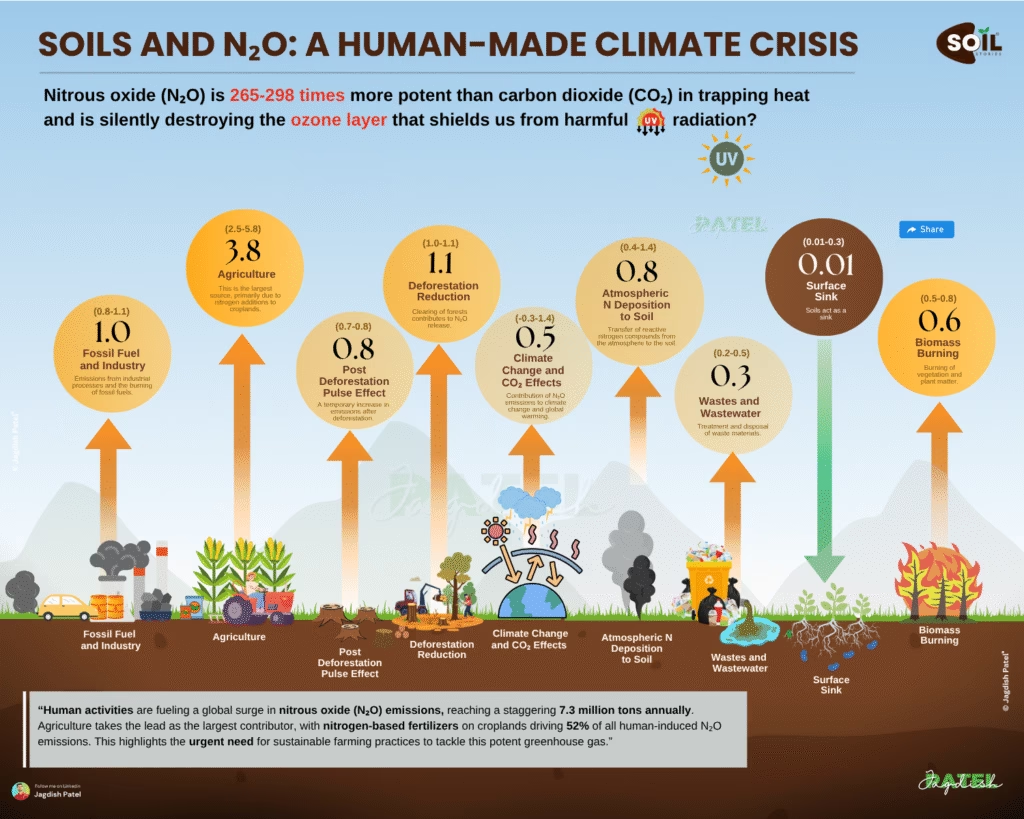
🔵 Methane (CH₄)
Methane is released from livestock digestion and flooded rice fields. According to the FAO, livestock alone contribute nearly 40% of global methane emissions from agriculture. Although methane breaks down faster than CO₂, it is 80 times more powerful in the short term.
🟡 Ammonia (NH₃)
Though not a greenhouse gas itself, ammonia reacts in the air to form fine particulate matter (PM2.5), which contributes to both climate change and respiratory illnesses. Emitted from urea fertilizers and manure, ammonia also acidifies soil and harms water quality. A PMC study outlines how ammonia plays a critical role in environmental degradation.
Why These Practices Persist
If the harm is so clear, why do farmers still rely on practices that pollute?
- Fertilizers are cheap, available, and yield quick results.
- Tillage is traditional and mechanically efficient.
- Government policies and subsidies often reward quantity over sustainability.
- Many farmers lack access to information on biological alternatives or regenerative methods, especially in low-income regions (Springer, 2024).
Farmers are not the problem. They are operating within a system designed for volume, not resilience. Changing this system requires support, incentives, and education.
How Climate Change Is Affecting Farming
Farming is not just a source of emissions, it is also one of the first casualties of climate instability. Here is how farmers are feeling the impact:
- Drought is drying soils and cutting yields.
- Rainfall has become unpredictable, delaying planting or destroying harvests.
- Heatwaves stress animals and reduce productivity.
- Floods cause erosion and nutrient leaching.
- Pests and diseases are increasing with warmer temperatures.
These issues make farming less predictable, more expensive, and more emotionally exhausting.
Climate-Smart Solutions: From Problem to Potential
Not all farming is harmful. Practices that work with biology rather than against it can help regenerate the land and reduce emissions.
1. Biological Fertilizers and Soil Microbes
Replacing synthetic nitrogen with compost, microbial inoculants, and biofertilizers can reduce N₂O emissions and enhance nutrient use efficiency. This approach builds a healthier root zone and restores soil function.
📖 Learn more: How Soil Microbes Feed Plants
2. Cover Cropping and Crop Rotation
Planting diverse species between harvests keeps the soil covered, prevents erosion, and fixes atmospheric nitrogen. Cover crops also feed beneficial microbes and reduce weed pressure.
🌱 Dive deeper: Root Exudates and the Soil Microbiome
3. No-Till and Minimum Disturbance
Avoiding tillage helps retain soil carbon and protect the microbial community. Over time, this leads to better water infiltration, less erosion, and improved drought resilience.
4. Agroforestry and Tree Integration
Combining trees with crops or pastures boosts carbon storage and biodiversity. Trees offer shade, wind protection, and year-round root activity that feeds the soil.
A PLOS Climate study shows that integrating trees into farmland can increase carbon sequestration by over 50% in just a few years.
5. Managed Rotational Grazing
By rotating livestock across paddocks, farmers allow vegetation to recover and root systems to deepen. This improves soil structure, carbon storage, and pasture productivity.
📖 Learn how cattle can regenerate land: Time article
6. Manure Composting and Anaerobic Digesters
Covering or composting manure reduces methane and ammonia loss. Biodigesters can convert waste into biogas, providing clean energy and reducing emissions.
7. Precision Nutrient Application
Using GPS and soil testing to apply fertilizers only where needed reduces waste and emissions. Advanced systems are now being integrated with AI tools to optimize timing and dosage.
🔗 Explore: Organic Matter vs. Fertilizer – What’s the Difference?
8. Green Ammonia and Next-Gen Inputs
Emerging technologies like green ammonia, produced with renewable energy, can deliver nitrogen with minimal emissions. According to Reuters, the industry is moving toward scalable, low-carbon fertilizer solutions.
What the Data Says
- A Frontiers meta-review found that regenerative practices such as composting, no-till, and agroforestry significantly increase soil carbon while maintaining yields.
- The FAO reports that reducing enteric methane through diet management and manure treatment could cut emissions by 30%.
- A PMC study on ammonia shows that better waste management could reduce PM2.5 emissions and their climate co-effects by over 40%.
The Path Forward: Wise Agriculture
Farming does not need to destroy the climate. It can help restore it. The way forward is not about high-tech shortcuts alone, it is about honoring the biology of the soil and the balance of natural cycles.
This shift requires rethinking incentives, re-skilling farmers, and rebuilding policies. But the reward is immense: healthier soil, stronger communities, and a climate that supports life.
🌿 Explore how we restore soil memory: Rebuilding Soil Memory Through Composting
📚 Want to Learn More? Watch the Video
If you prefer a quick visual overview, I’ve also created a short explainer video on this topic. You can watch it here:
Can Farming Help Fight Climate Change?
Here are some more illustrated guides on restoring soil and reducing emissions:
- How Soil Microbes Feed Plants
- Root Exudates and the Soil Microbiome
- Organic Matter vs. Fertilizer
- Rebuilding Soil Memory
🖼️ All visuals and article by Jagdish Patel © | www.jagdishpatel.info

